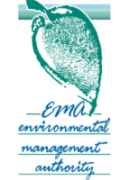The Air Pollution Rules, 2014 (APR) is legislation developed under the Environmental Management Act Chapter 35:05. Through the APR, the EMA seeks to manage the levels of specific air pollutants known to cause harm to human health and the environment, thereby improving overall air quality. To this end, prescribed standards for air pollutants in Ambient Air (Schedule 1) and for the release of air pollutants at distinct points (Schedule 2) have been established.
The APR is administered by two major processes:
- Source Registration – the process whereby the owner/operator of a facility emitting or intending to emit air pollutants submits an application for the facility to be registered with the EMA and pays the prescribed fee. All Fees payable under the APR are outlined in the Air Pollution (Fees) Regulations, 2014. Details of the facility’s operation, including the location and characteristics of the air pollutants being or anticipated to be emitted, are required in the application, among other things. The information gathered during this phase is used to create an inventory of the nation’s air pollutant sources, and the types and quantities of air pollutants released into the atmosphere and the receiving environment. The Registrant is issued with a Source Emitter Registration Certificate.
- Permitting – after a Source Emitter Registration Certificate has been issued, the EMA may notify a Registrant to apply for an Air Pollution Permit (APP). The purpose of the APP is to control the types and quantity of air pollutants emitted into the atmosphere, with the purpose of protecting ambient air quality. A permit is valid for a period of up to five years and requires the holder of the permit to implement measures to reduce the impact of their emissions and monitor such emissions for compliance with Schedule 1 and/or Schedule 2 of the APR.
